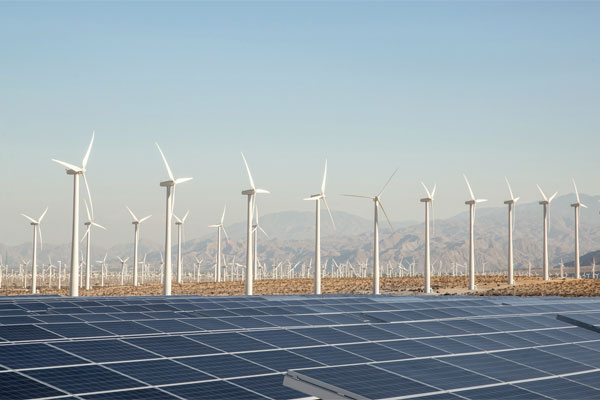Offsite renewables have certainly been a hot topic in 2016. Last year, corporates procured 3.24GW of wind and solar energy combined. While wind has historically comprised the majority of offsite transactions, comprising nearly 85 percent of announced transactions, GTM Research estimates over 800MW of solar will be procured by corporates in 2016, up 400 percent over 2015. Solar is starting to compete, but why?
1. Smaller bets
With wind, it’s go big or go home. Solar allows corporates and other institutions to place smaller bets in the 10-50MW range, as opposed to the 100-300MW range, where wind is currently occupying. This allows a buyer to test the waters of the virtual PPA rather than going all in, which is especially helpful for “new” renewable buyers looking to build internal approval. Smaller increments also open up the market to a much larger swath of customers, including universities, and smaller, more regionally focused C&I customers. In the market landscape, wind needs to group together their projects, while solar can execute a PPA for a full project and not give up any transaction costs that might be lost by grouping.
2. Incremental value
Because solar procurements can come in all sizes, customers may incrementally bump up their renewable energy exposure without biting off more than they can chew. This is especially relevant once companies that have a 100 percent renewable energy target start planning for future energy growth. Wind portfolios may bring these companies to the 100 percent goal, but renewable growth from there on may take smaller, solar-friendlier forms.
3. Basis risk
Basis risk is where your Virtual PPA contract and commodity price do not flow together. So, a Virtual PPA is used in the offsite space to encompass both long-term grid variations but also nodal risk specific to geographies.
Solar is advantaged in basis risk because it is often located closer to demand and must overcome fewer transmission and distribution hurdles to get to either the customer’s demand or a more liquid zone or hub.
Secondly, solar’s peak often coincides with demand peaks, meaning long-term fluctuations in energy pricing will have less of an impact as hourly energy prices start to vary with increased wind penetration.
4. Renewables…Faster
Solar has a much shorter development timeline and can therefore go from idea to operation in less time than wind can complete initial studies. This is especially important when discussing future planning with energy customers who are eager to procure renewables, and fast.
RE100 counts 83 companies – such as Apple, Bank of America, Bloomberg, and Walmart – who have committed to going 100 percent renewable. Wind, solar, and other technologies will all be needed as we look toward a renewable energy future. As solar transitions from a niche product to a cost competitive source of renewable energy, it is increasingly important that buyers are aware of all of their options. Solar is well-positioned to succeed in the offsite procurement market, but it’s up to solar developers to ensure we’re using the technology traits to our advantage.













Comments